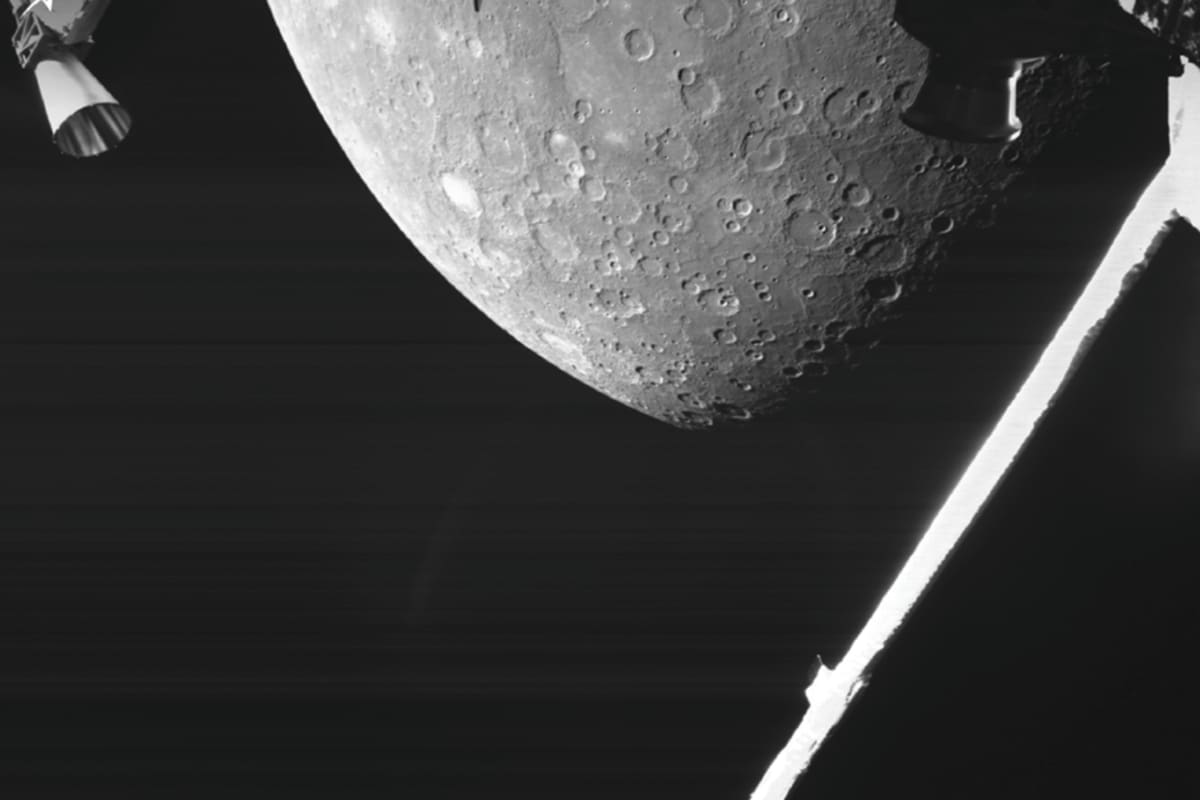
The result is a beautiful picture of the still rather mysterious inner planet of our solar system.
Space probe BepiColombo took the picture this weekend as it skimmed past the planet. In addition to the richly cratered surface of Mercury, the photo also shows parts of the spacecraft itself.
Gravity Pendulum
BepiColombo is currently en route to Mercury, and although the spacecraft came very close this weekend – BepiColombo approached Mercury’s surface to about 200 kilometers – it is far from there. Last weekend’s flyby only served as a ‘gravity pendulum’. It uses the gravity of a celestial body to change the course and/or speed of a space probe. In this case, Mercury’s gravity is used to eventually maneuver BepiColombo into safe orbit around Mercury. Incidentally, it will take some time before BepiColombo settles into orbit around Mercury; that won’t happen until 2025.
Also, it requires even more gravitational pendulums; last weekend’s flyby of Mercury was the first of six. In 2022, 2023, 2024 (twice) and 2025, BepiColombo will skim Mercury again for some help en route to..Mercury. Those flybys follow previous flybys of Earth and Venus.
First look at Mercury
What makes last weekend’s flyby special is that BepiColombo was able to take a look at its final destination for the first time. And what one! Although the photos were taken with mediocre cameras (see box), the photos are impressive. Mercury’s surface is clearly visible, as are numerous (large) craters, including the 166 km wide Lemontov crater.
Distance
The photo you see below was taken from a distance of about 2,418 kilometers. That’s quite a long way off, considering that the probe approached Mercury’s surface to about 199 kilometers during this flyby. Still, we shouldn’t expect much nicer close-up images. That’s because BepiColombo, when it was closest to Mercury, skimmed over the unsunlit side of the planet. As a result, the surface was barely visible and good pictures could only be taken from a greater distance.

Image: ESA / BepiColombo/ MTM, CC BY-SA 3.0 IGO.
The images are just a taste of what lies ahead. After arriving at Mercury, the orbiters will take many more beautiful pictures of the planet and hunt for the secrets of Mercury. For example, thanks to the BepiColombo mission, researchers hope to gain more insight into the origin and evolution of a planet very close to its parent star.
Source material:
“hello mercury” – ESA
Image at the top of this article: ESA / BepiColombo / MTM, CC BY-SA 3.0 IGO